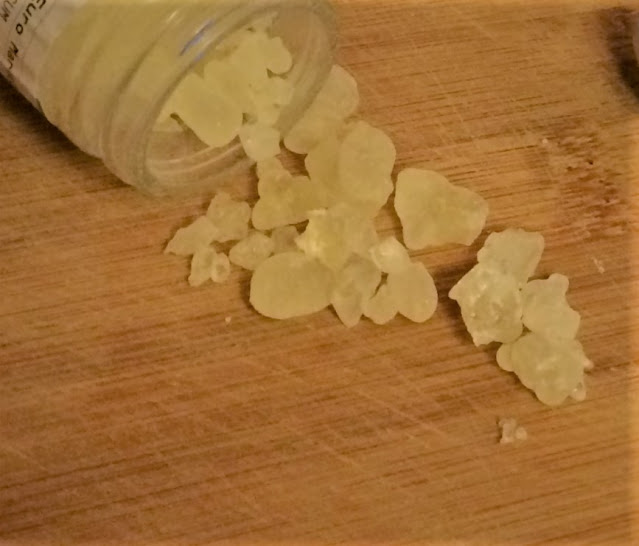Skordalia is a favourite accompaniment to salt cod (bakaliaros), and other types of fish. It's also served with fried or boiled vegetables. It's tantalizing and delicious, but beware: the amount of garlic used is plentiful, so don't eat skordalia if you're planning a romantic tête-à-tête after dinner. My maternal grandmother, as I have often been told, always made her skordalia by using walnuts to bulk it up. However, the most popular version is made with potatoes. I make my potato skordalia by using lemon plus two types of vinegar: white balsamic and white wine. This acidic combination lends a fruity delectable taste that elevates the humble skordalia to a whole other level. Here's the recipe:
Ingredients:
- 3 potatoes (should add up to little more than a pound)
- 2 cloves garlic, chopped
- 1/2 cup olive oil
- juice of one lemon
- 2 tablespoons white wine vinegar
- 2 tablespoons white balsamic vinegar
- ground black pepper to taste
- salt is optional
- Parsley, well chopped, to sprinkle on top
- One scallion sliced very thinly to sprinkle on top (optional)
Directions:
- Peel the potatoes cut them into pieces and place them in a saucepan. Cover them with water, and boil them until soft. Drain but reserve some of the water to use if necessary.
- Mash the potatoes by hand.
- In a food processor puree the garlic.
- FLASHBACK: today most everyone uses a food processor, but I remember as a child watching an aunt prepare garlic for skordalia by mashing it up with a pestle in her beautiful marble mortar. I was completely fascinated and I wanted that mortar and pestle for my toy box! She didn't let me play with it even though she was otherwise very kind ... Well, flashbacks are fun!
- To the processor, add the oil, vinegar and lemon juice. Mix it well.
- Slowly pour the garlic/oil mixture onto the potatoes, mixing all the while.
- The skordalia should be thick and soft. If it is too lumpy add some of the reserved water and mix to soften it.
- Season with pepper as needed.
- Skordalia should have a garlicky taste. Use as much garlic as you are comfortable using. No more and no less.























